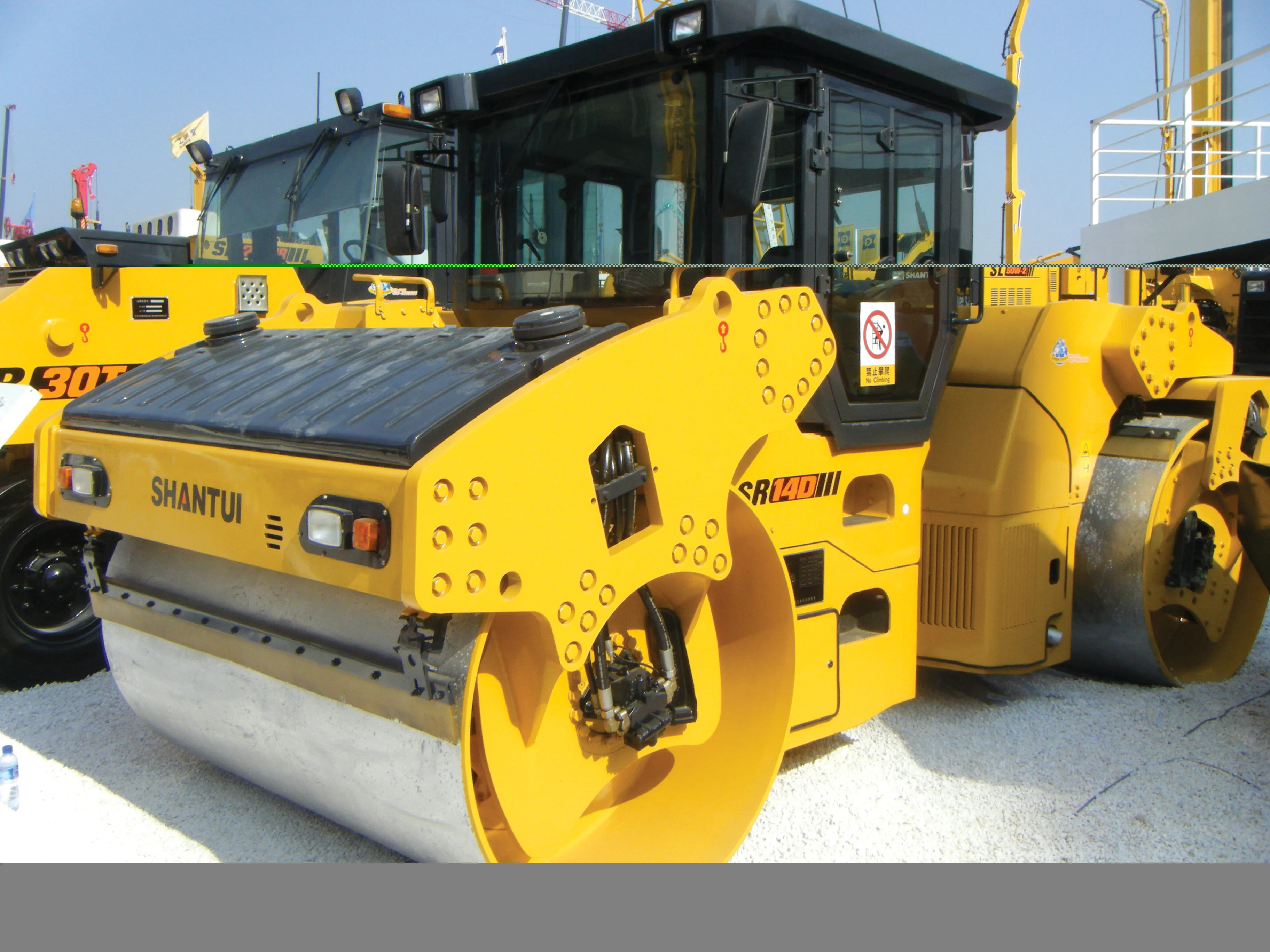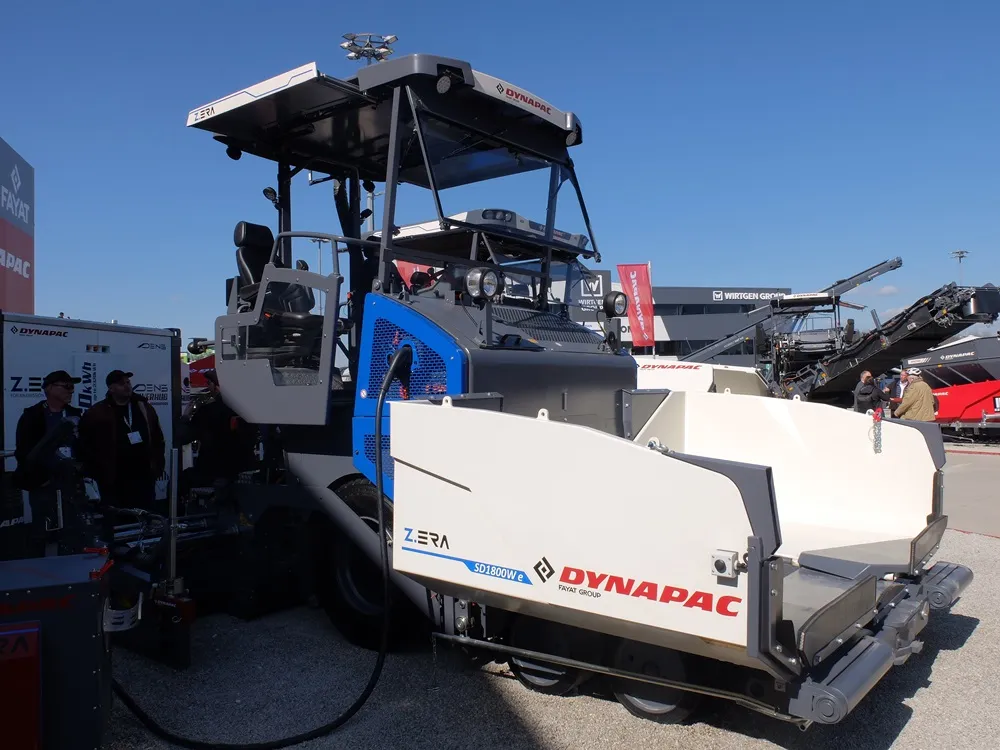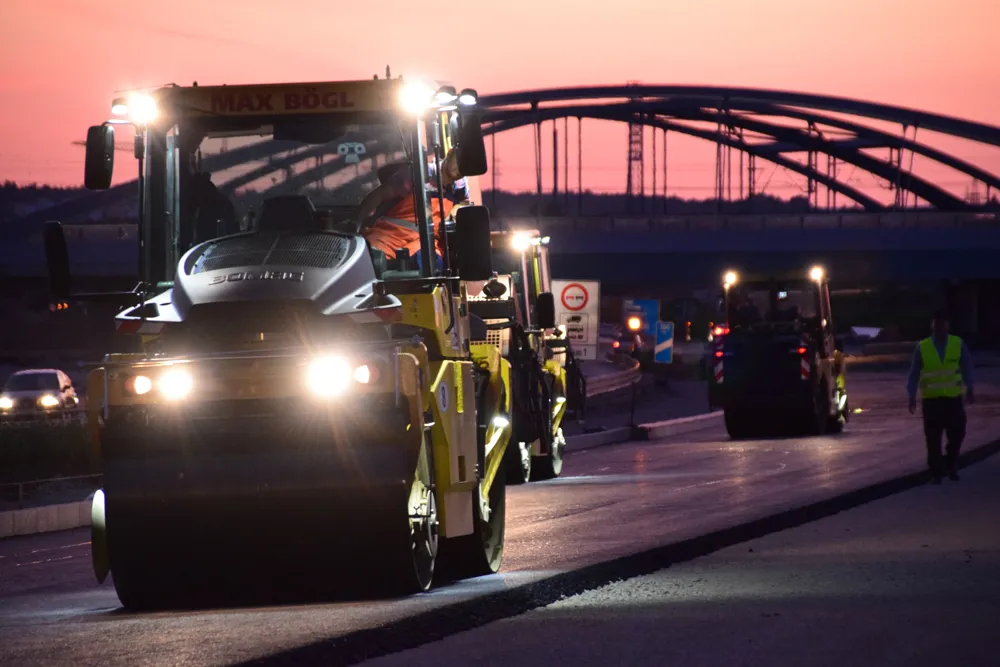
The novel HD+ 90i PH hybrid tandem roller from Hamm first seen in prototype form is now being offered as a production model. This follows extensive testing of the hydraulic hybrid package in onsite conditions in various countries. The drive system for this 9tonne compactor combines a conventional diesel with a hydraulic accumulator package. The diesel engine provides most of the power for driving the machine, with the hydraulic accumulator then supplying peak power requirements. The system offers considerable savings on fuel, as well as operating costs, while still delivering the same compaction performance as a standard machine.
The firm realised that as peak power is only required for short periods such as starting up or switching on the vibration/oscillation system, fitting the hydraulic accumulator would allow the machine to operate with a much smaller engine delivering 55.4kW, instead of the 85kW engine normally required for a 9tonne class asphalt compactor. With the smaller engine, there is also no need for the complex emissions control system, which further reduces maintenance costs. Gottfried Beer is head of marketing at Hamm and said, “The fuel consumption is 15% lower and the noise is lower because the engine and electric fan are also smaller. There’s less CO2 and service and maintenance costs are less.”
As soon as the power demand falls below the maximum load of the internal combustion engine, a pump fills the hydraulic accumulator. If a lot of power is called for, the hydraulic system functions as an auxiliary drive, supplying a maximum short-term load of up to 20kW. Following this the cycle begins afresh with the refilling of the accumulator. Maximum power is usually only called up for a matter of seconds and there is then sufficient time to recharge the accumulator.
Extensive trials with contractors in Sweden and France have shown the system to be effective, reliable and quiet, as well as being cheaper to operate. Meanwhile compaction performance is the same as for a standard machine. Beer said, “We have to convince them with this machine.”
Several variants are available, including double vibration (VV), double vibration with split drum (VV-S), one oscillation and one vibrating drum (VO), one oscillation and one split vibrating drum (VO-S), as a combi roller (VT) and as a combi roller with split vibrating drum (VT-S).








